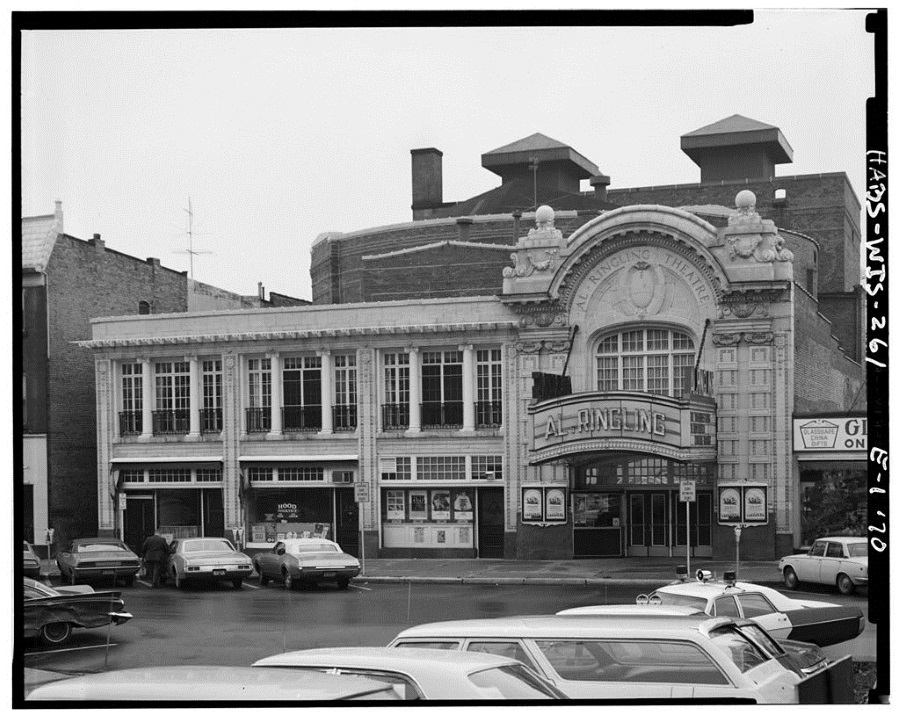180 YEARS AGO (1835)
James Caldwell, the actor/manager responsible for the American Theatre, New Orleans’s first playhouse dedicated to English-language plays, opens the St. Charles Theatre, also in NOLA. The debut performance, which includes the plays The School for Scandal and The Spoiled Child, takes place before the auditorium’s design is finished, and the press finds the theatre less than exciting. However, perceptions will change the following season with the introduction of the theatre’s trademark gas-lit 12-foot-high chandelier.
135 YEARS AGO (1880)
Paris-born performer Sarah Bernhardt makes her first appearance in the U.S. at Booth’s Theatre in New York City, launching the first of many national tours. The New York Times will write that earlier in the day, people “collected in crowds and knots about Booth’s Theatre to buy tickets at triple and quadruple prices.”
100 YEARS AGO (1915)
The Al. Ringling Theatre, named after its owner, the renowned circus impresario, opens in Baraboo, Wisc. Believed to be the proprietor’s thank-you gift to his home for four decades, the opening is considered the most significant event in the town’s history.
90 YEARS AGO (1925)
The Carolina Playmakers (the forerunner of PlayMakers Repertory Company) moves to Smith Hall at the University of North Carolina in Chapel Hill. The company calls itself “the first state-supported theatre in America to be devoted to the making of its own native drama.”
75 YEARS AGO (1940)
Ethel Barrymore stars in the NYC premiere of The Corn Is Green at the National Theatre (which, after multiple name changes, will be rechristened the Nederlander Theatre). Brooks Atkinson will begin his New York Times review, “With the first real snow of late Autumn comes the first real play of the season.” Considered by some critics to feature Barrymore’s greatest performance, the production will run 477 performances and garner a return engagement in 1943. Barrymore will appear in just one more show on Broadway, 1944’s Embezzled Heaven.
65 YEARS AGO (1950)
In the midst of a tour of I Know, My Love with husband Alfred Lunt that is beleaguered by illness, theft, and snow storms, plus a concussion caused by a falling prop, Lynn Fontanne trips and falls in Portland, Maine, on her way to the evening’s show, breaking her wrist. She vows to go on anyway, refusing painkillers other than a shot of novocaine (anything else, she believes, would dilute her performance), and has a series of slings made to match each of her costumes.
60 YEARS AGO (1955)
Alice Childress’s Trouble in Mind opens Off-Broadway at the Greenwich Mews Theatre, one of the first white theatres to mount plays with integrated casts. The satirical backstage drama foregrounds issues plaguing black actors—including stereotypical roles and a general lack of performance opportunities. The piece solidifies Childress’s career and makes her one of the first prominent female African-American dramatists.
50 YEARS AGO (1965)
El Teatro Campesino publishes its first leaflet calling for a gathering. Formed on the picket lines of the Delano Grape Strike in California, the troupe—a trailblazer of Latino theatre in the U.S.—will perform pieces advocating for social justice and human rights.
25 YEARS AGO (1990)
Paul Chihara and John Driver’s Shogun, the Musical opens on Broadway. Though a handful of other shows have explored Asian themes, the music by the Japanese-American Chihara makes Shogun the Great White Way’s first musical by a composer of Asian descent. Chihara is also the second Asian-American writer represented on Broadway, following David Henry Hwang, who made his Times Square debut only two years earlier with M. Butterfly.
15 YEARS AGO (2000)
Tectonic Theater Project performs The Laramie Project in its eponymous Wyoming town, the show’s local debut. Company members conducted interviews with the community in order to create this piece of verbatim theatre, and some of them saw it in its previous runs at the Denver Center for the Performing Arts and Off-Broadway. However, this staging marks the first time many of Laramie’s residents are seeing the play—including some depicted as characters.


